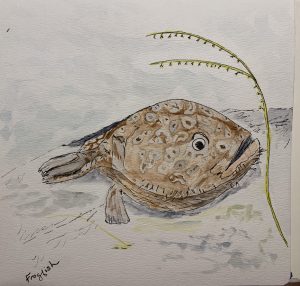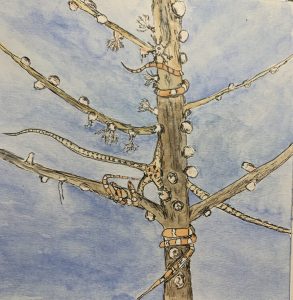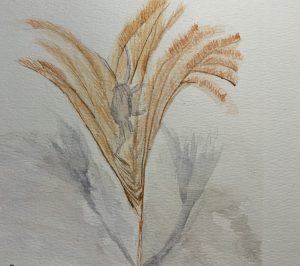Diagnosing Deep Corals
I’ve gotten waaaay behind on updating this blog, and there is a lot to catch up on! Over the next several posts, I’ll share highlights from two recent field campaigns. This post focuses on the “Coral Pulse” cruise that I joined in April aboard the R/V Falkor (too), operated by the Schmidt Ocean Institute. The cruise was led by WHOI Senior Scientist Colleen Hansel, in collaboration with Santiago Herrera (Lehigh University, expert in deep-sea coral ecology and evolution, and a MIT-WHOI JP Alum) and Scott Wankel (WHOI, stable isotope geochemistry expert).
The goal of the cruise was to use SOLARIS, a custom instrument developed by Hansel and her collaborators to measure the production of ROS (reactive oxygen species, specifically peroxide and superoxide) by shallow-water, mesophotic, and deep-sea corals off the coast of Puerto Rico. The Hansel lab had previously shown that shallow-water scleractinian corals release these chemicals, and that the amount released shows some broad taxonomic trends (some species release more than others). Scientists don't really know why the corals do this -- some likely possibilities include helping the corals to capture and digest prey, aiding in wound healing, and regulating their microbiome. On this cruise, we wanted to explore how ROS production varied with depth, and to get a better understanding of both the types of corals that tend to release ROS and the conditions under which they do so. If we understand the role that ROS release plays in coral health, then measuring ROS release may give us a way to "diagnose" the physiological status of a coral without collecting a physical tissue sample.
I was delighted when Colleen invited me to join the project. We spent about 3 weeks aboard the Falkor (too) during which we measured ROS associated with corals in the field, and sampled corals for subsequent analyses of genetics, gene expression, microbiome composition, stable isotope composition, and trace metal content. My main contribution to the project will (eventually) be in contributing to the gene expression analysis. We collected a lot of samples and data (see our cruise log here), and are hoping to synthesize this work and use it as the basis for a proposal later this fall.
I hadn't done much deep-sea work previously (I got to go on one dive to a mesophotic reef in a submersible back in my grad school days), and I was amazed by the technological capabilities. We were using the ROV SuBastian to sample the corals, so I spent many hours in the control van. In the van, the scientists would direct the pilots to sample corals or make measurements with SOLARIS. My knowledge of deep-sea corals is limited (I was vaguely more helpful in identifying the local reef fish), so I was mostly watching and learning about the environment. I was shocked at how well we could experience the environment from the control van. With the high-resolution camera equipment, I could see the corals better than I would have been able to see them through the window of a submersible!
There was NOT much free time on the cruise. Dive frequently lasted most of a 12-hour shift, and after the shift, we would need "all hands" (from the coral group) to help process samples for several hours. But I stole a few scraps of time to make watercolors of some of my favorite views.



